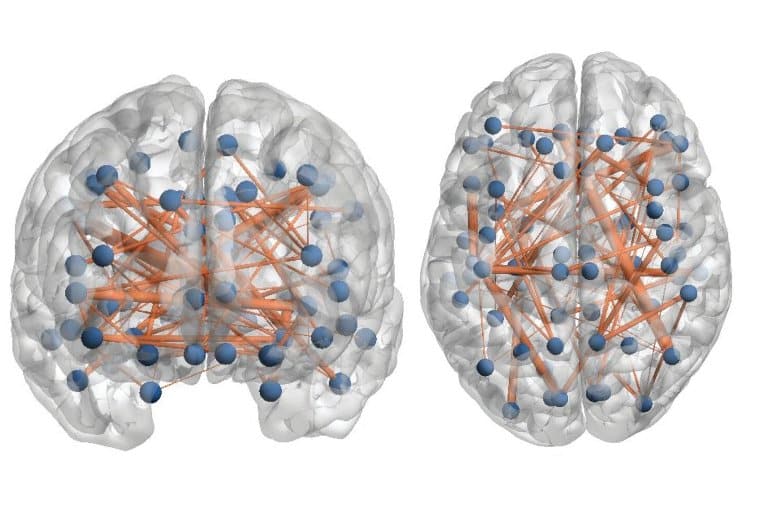Summary: Researchers have developed a new method to measure the delay of neurotransmission in those with multiple sclerosis that does not involve direct stimulation but instead used neural avalanches, or bursts of activity in cascades that spontaneously travel across the brain.
Source: Human Brain Project
Researchers of the Human Brain Project have developed a new methodology to calculate the delay of signal propagations in brains of patients suffering from multiple sclerosis, a chronic inflammatory disease that affects more than 2 million people worldwide.
The results have been published in the Journal of Neuroscience by researchers at the Institut de Neurosciences des Systèmes, Marseille, France and of the University of Naples Parthenope and the University of Campania, Caserta in Italy.
In multiple sclerosis, the immune cells of the body attack the myelin, an insulating sheath that covers all the neurons. Myelin serves a similar purpose to the plastic that insulates electric cables, making electricity travel faster.
A damage to the myelin layer in the brain causes the electrical signals to slow down, translating into delayed communications between brain areas and reduced or compromised abilities. Measuring the precise effect of the myelinic damage can help doctors in providing a personalized approach to the patients.
This is harder than it looks for multiple sclerosis: “This illness is a diagnostic paradox,” explains Pierpaolo Sorrentino, lead author of the study. “There are patients whose MRI scans show extensive degradation of myelin but do not experience a corresponding impairment, and others that show little evident damage but still experience considerable issues. Often we are not able to tell by simply looking at the scans.”
Stimulating the brain to measure real-time delay between areas is also not effective when attempting to estimate the delays of many brain connections and not just one: the signal ends up being too muddled up to be a reliable indicator of propagation.

Instead, the researchers have developed a method to measure the delay that does not involve direct stimulation, but uses the neuronal avalanches (bursts of activity happening in cascades) that spontaneously travel across the brain.
“These spontaneous bursts of activity can be used to measure the time it takes a signal to travel across the white-matter bundles connecting any two brain areas and then compare it with healthy controls without any myelinic damage,” says Sorrentino.
“By not interfering directly with the signal, we can in a few minutes estimate the delay between most pairs of brain regions and then integrate it with what the MRI scans are showing us.”
In addition to informing the treatment, the method can also be used to refine virtual brain models of patients to further increase the level of personalization. Large-scale brain modeling typically assumes constant velocity of signal across the edges, but this isn’t exactly true even in a healthy brain.
“We are now able to add the time delay factor to these simulations, improving the diagnostic and predictive tools available to doctors and their patients,” Sorrentino concludes.
About this multiple sclerosis research news
Author: Press Office
Source: Human Brain Project
Contact: Press Office – Human Brain Project
Image: The image is credited to Sorrentino et al
Original Research: Closed access.
“Whole-brain propagation delays in multiple sclerosis, a combined tractography—magnetoencephalography study” by Pierpaolo Sorrentino et al. Journal of Neuroscience
Abstract
Whole-brain propagation delays in multiple sclerosis, a combined tractography—magnetoencephalography study
Two structurally connected brain regions are more likely to interact, with the lengths of the structural bundles, their widths, myelination, and the topology of the structural connectome influencing the timing of the interactions.
We introduce an in vivo approach for measuring functional delays across the whole brain in humans (of either sex) using magneto/electroencephalography and integrating them with the structural bundles. The resulting topochronic map of the functional delays/velocities shows that larger bundles have faster velocities.
We estimated the topochronic map in multiple sclerosis patients, who have damaged myelin sheaths, and controls, demonstrating greater delays in patients across the network and that structurally lesioned tracts were slowed down more than unaffected ones.
We provide a novel framework for estimating functional transmission delays in vivo at the single-subject and single-tract level.






